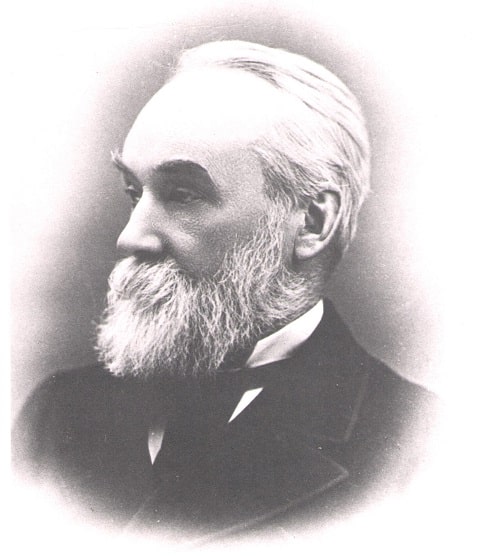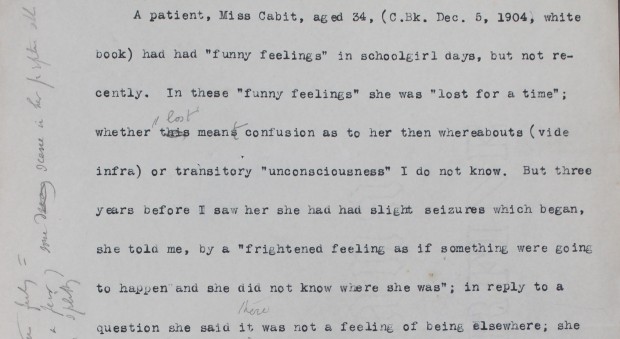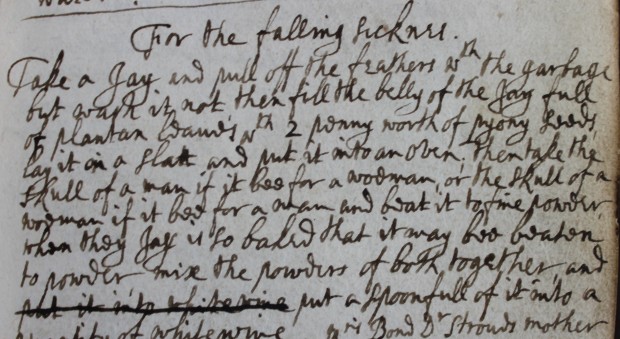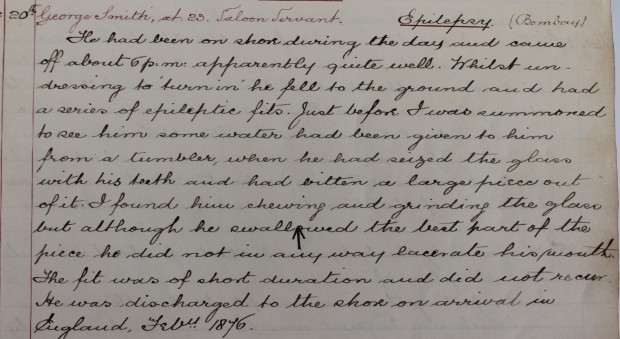What can the records of physicians really tell us about the experiences of people with epilepsy through time?
What Secunda said and did I should interpret as signifying an urgent desire to get back and to be allowed to go back to her home or to some place well known to her.

John Hughlings Jackson (1835–1911) made this observation in 1904 about a Miss Cabit, a patient he was treating for epilepsy. The Royal College of Physicians (RCP) archive contains several records that describe the experiences of people with epilepsy over the last 400 years or more, but most of these are clinical in nature, focussing on causes, symptoms, and treatments. Hughlings Jackson’s case notes, however, are an example of a doctor reaching to understand how his patients themselves feel and what the experience of a seizure is like from their unique perspective.
Hughlings Jackson appears critical of the view of patients having seizures as ‘vile automata’, asserting instead that all human experience has value and meaning. He coins the term ‘Otherwhere’ to describe the ‘dreamy state’ entered by patients during a seizure, separating his patient into Cabit Prima, whom he interacts with in the world he is aware of, and Cabit Secunda, who exists in the world of Otherwhere.

After encountering his expressive writing that touches on the nature of reality, it is not surprising to learn that one of Hughlings Jackson’s earliest passions was philosophy. Indeed, after his death, his lifelong friend, Jonathan Hutchinson (1828–1913), partly regretted that while, by persuading Hughlings Jackson to pursue a medical career, he had given the world a great doctor and scientist, he had also deprived it of a great literary and philosophical writer.
As a young man, Hughlings Jackson was compelled to move to London from Yorkshire after the death of his father and sister, and he may have had particular sympathy for Miss Cabit’s apparent need, as quoted above, to escape to a safe, familiar place, a desire she vocalised during her seizures. But in contrast to his at-times whimsical notes, Hughlings Jackson’s achievement as a neurologist in the 1860s was to establish a purely scientific view of epilepsy by showing that seizures were linked to electrical discharges in the brain, and were not supernatural in origin, a notion that had not been entirely dispelled even by the 19th century.
Some of the earliest references to epilepsy in the RCP archive are found in our collection of 17th-century medical recipe books. These handwritten remedies were accumulated by families for use in the home, and were often influenced by the traditional idea that seizures were caused by evil spirits inhabiting the body of the patient. One treatment for ‘the falling sickness’ (epilepsy) reads:
Take a Jay and pull off the feathers w[i]th the garbage [entrails] but wash it not, then fill the belly of the Jay full of [plantain] leaves w[i]th 2 pennyworth of pyony seeds, lay it on a flatt and put it into an oven; then take the skull of a man if it bee for a woeman, or the skull of a woeman if it bee for a man and beat it to fine powder, when they Jay is so baked that it may bee beaten to powder mix the powders of both together, and put it into white wine put a spoonfull of it into a quantity of white wine.

Powdered skull
The use of powdered human skull was based on the idea that in order to cure a spiritually corrupted body, the patient should ingest part of the body of an individual who had been healthy in life. This practice was applied to a range of conditions, and tended to employ dead body parts that related to the affected part of the patient’s body. This being the case, the consumption of skulls for epilepsy might suggest an acknowledgement that the condition related to the head or brain.
Later documents highlight the experiences of specific individuals with epilepsy. These include 71-year-old Elizabeth Kelsey from Lancaster, who, in 1808, argued with her doctor, Jonathan Binns (d.1812), over his insistence that she take daily cold showers to prevent seizures, and refused to let him treat her with leeches.
Robert Reid recounts in 1831 the story of a 14-year-old boy in Dublin who for months suffered terrible seizures; out of desperation doctors cut open the back of his skull and discovered part of a penknife blade embedded there. After the operation to remove it, the boy made a full recovery and recalled that he had fallen while playing with his penknife and had wondered where the blade had gone!
Theodore Preston (1847–1913), ship’s surgeon aboard the HMS Crocodile in 1876, treated two crewmembers for epilepsy, one of whom, Matthew Abbott, provoked a seizure by continuously drinking from his hip flask while on duty, and the other, George Smith, who bit into a tumbler while having a seizure, swallowed several large pieces of broken glass and yet was unharmed!

When researching the history of epilepsy, the stigmatisation of people with the condition throughout time and around the world is well attested. However, while looking through the RCP archives, I have been struck by the impression that largescale prejudice is more evident in twentieth century records than in earlier documents. A set of RCP epilepsy committee minutes from 1968 describes people with severe epilepsy as ‘a major problem’ (admittedly, the committee sought to redress inequalities in service provision). A research paper from the 1930s links epilepsy with socioeconomic background and dismisses patients as ‘not too bright’. In the records from earlier centuries, the doctors seem less interested in casting judgements and more concerned with treating the patients as they present themselves.
However, a major gap in our collection is the records of people with epilepsy themselves. Virtually all our records are written from the point of view of medical practitioners rather than patients. The RCP archive is always grateful for offers of donation, and if you have any personal papers such as letters, diaries, or blogposts about your experiences with epilepsy or those of a family member or ancestor, we would love to hear from you at history@rcplondon.ac.uk. The RCP archive collects records relating to all aspects of the work of physicians and the experiences of their patients, and the records we receive are preserved securely to inform and enrich future generations.
Felix Lancashire, assistant archivist
Read our weekly library, archive and museum blog to learn more about the RCP’s collections, and follow @RCPmuseum on Twitter and @rcpmuseum on Instagram.
